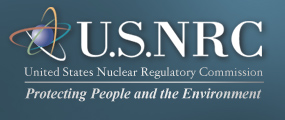Resolution of Generic Safety Issues: Item A-34: Instruments for Monitoring Radiation and Process Variables During Accidents ( NUREG-0933, Main Report with Supplements 1–35 )
DESCRIPTION
This NUREG-03712 item was initiated in order to develop criteria and guidelines to be used by applicants, licensees, and staff reviewers to support implementation of Regulatory Guide 1.97,55 Revision 1. Such criteria and guidelines were to provide specific guidance on functional and operational capabilities required of the various classes of instruments, including in-plant and ex-plant instruments. Where such guidance could not be provided, the rationale to be applied to derive requirements for specific situations was to be provided.
The objective of Regulatory Guide 1.9755 was to ensure that, during and following an accident, appropriate parameters and system functions are monitored in order that plant personnel will have sufficient information to take appropriate actions to restrict the courses and consequences of accidents. At the start of an accident, the operator cannot always determine what accident has occurred and, therefore, cannot always determine the appropriate response. For this reason, the reactor trip and certain safety actions (e.g., emergency core cooling actuation) are designed to be performed automatically during the initial stages of an accident. However, instrumentation is also necessary to provide information about plant parameters and system functions in order to enable the operator to cope with the ensuing event sequence. The operator must have sufficient information available to: (1) determine the course of an accident; (2) make decisions concerning appropriate manual action; and (3) assist in determining what actions, if any, are needed to execute the plant emergency plan.
In the course of implementing the initial phase of the Task Action Plan,2 it became obvious that Regulatory Guide 1.97,55 Revision 1 included a provision which industry claimed to be impractical at that time and other provisions for which more definitive guidance was needed to define acceptable means of compliance. The primary issues in controversy were Positions C.1 and C.3 of the Regulatory Guide.55
Position C.1 was intended to ensure that the station design included sufficient instrumentation to meet the objectives described in Position C.1 for each of the design basis accidents normally analyzed by an applicant in Chapter 15 of a Safety Analysis Report.
Position C.3 of Regulatory Guide 1.97,55 Rev. 1, described specific instrumentation to be used if accident conditions were to degrade beyond those assumed in the FSAR. Various industry representatives expressed concern about the ranges of the instruments described in Position C.3 and the implication of monitoring accidents beyond the plant design bases. This position was not explicitly intended to monitor accidents beyond the design bases but instead was intended to provide assurance that, even under conditions that degrade far beyond those that are assumed in the accident analyses, the operator would have usable instrumentation that would provide a basis for decision-making.
Technical work on this item was completed in 197956 but implementation did not take place as was planned because of the occurrence of the TMI-2 accident. Instead, the TMI Lessons Learned Task Force reexamined57 this issue and recommended a modified implementation plan.58 Implementation is currently being carried out under TMI Action Plan Item II.F.3.48
In addition, Revision 2 to Regulatory Guide 1.97, published in December 1980, identified specific parameters and instrument ranges and provided definitive guidance on acceptable means of compliance. The NRC selected parameters and ranges to span event sequences within and beyond the design basis.
CONCLUSION
This item has been resolved and is being implemented under TMI Action Plan Item II.F.3.48
REFERENCES
|


